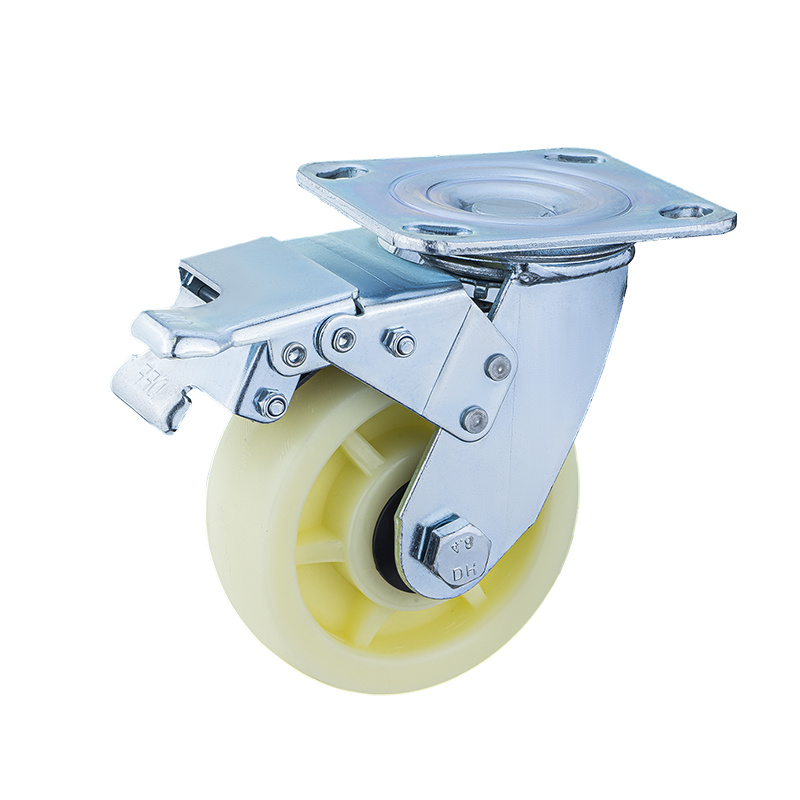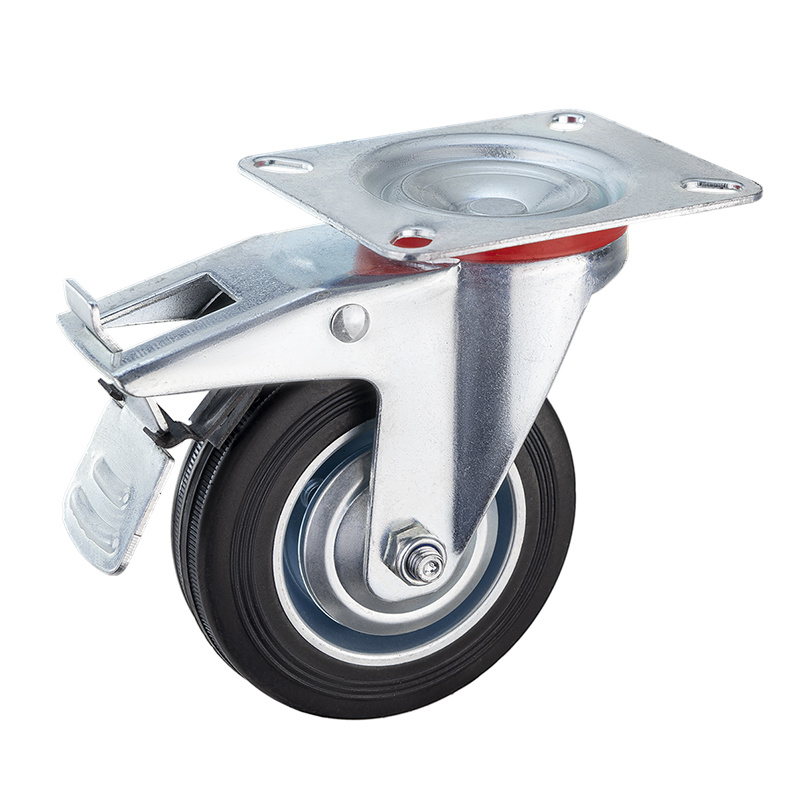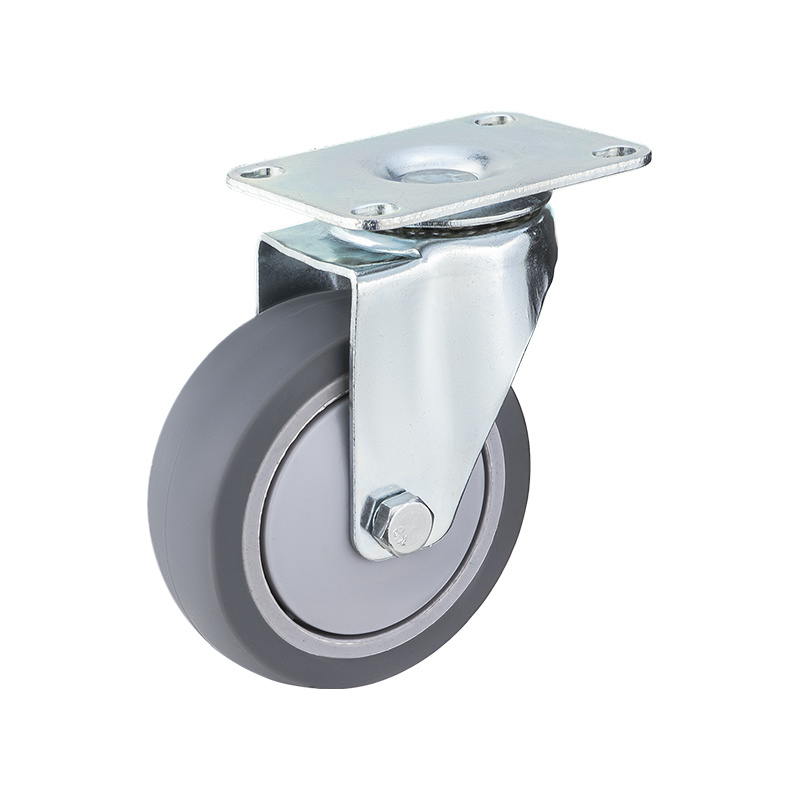BLOG
Mastering the Essentials of Industrial Casters for Optimal Performance
2025-05-17
Industrial casters are vital components in various industries, especially in the realm of hardware tools and accessories. Understanding these components can significantly impact your operations, whether you're involved in manufacturing, warehousing, or logistics. This article delves into the essential features, types, and maintenance tips related to industrial casters, aiming to equip you with pra
Industrial casters are vital components in various industries, especially in the realm of hardware tools and accessories. Understanding these components can significantly impact your operations, whether you're involved in manufacturing, warehousing, or logistics. This article delves into the essential features, types, and maintenance tips related to industrial casters, aiming to equip you with practical knowledge for better decision-making.
**Understanding Industrial Casters**
Industrial casters are wheels mounted on a frame, allowing for the easy movement of heavy loads. They are designed to accommodate various surfaces and environments, making them indispensable in industrial settings. When selecting casters, it's crucial to consider factors such as load capacity, wheel material, and wheel size. Each of these elements plays a pivotal role in the casters' performance and longevity.
**Types of Industrial Casters**
There are several types of industrial casters, each suited for different applications. The most common types include:
1. **Rigid Casters**: These wheels only rotate in one direction, making them ideal for straight-line movement. They are often used in applications where directional changes are minimal.
2. **Swivel Casters**: These wheels can rotate 360 degrees, allowing for greater maneuverability. They are perfect for environments where flexibility is necessary, such as in tight spaces.
3. **Braked Casters**: Equipped with a brake system, these casters provide stability when stationary. They are essential for ensuring safety when working with heavy equipment.
4. **Specialty Casters**: These are designed for specific applications, such as those used in clean rooms or for high-temperature environments.
**Choosing the Right Caster**
When selecting industrial casters, begin by assessing your specific needs. Consider the load capacity required and the type of flooring in your workspace. For instance, softer wheel materials like rubber are better suited for delicate floors, while harder materials like polyurethane are ideal for durability and heavy loads. Additionally, think about the frequency of movement and the type of equipment the casters will be used with.
**Maintenance of Industrial Casters**
Regular maintenance is key to prolonging the life of industrial casters. Here are some tips to keep them in optimal condition:
- **Inspect Regularly**: Frequently check for any signs of wear and tear, including cracks or flat spots on the wheels.
- **Lubrication**: Ensure that swivel mechanisms and bearings are adequately lubricated to prevent stiffness and ensure smooth operation.
- **Tighten Hardware**: Regularly check and tighten any loose bolts or screws to maintain structural integrity.
- **Clean Wheels**: Remove any debris or buildup on the wheels to prevent operational issues and maintain traction.
In conclusion, understanding the essentials of industrial casters can lead to improved efficiency and safety in your operations. By selecting the right type of caster, maintaining them properly, and knowing their specific applications, you can optimize your workflow and enhance overall productivity in your industrial environment.
**Understanding Industrial Casters**
Industrial casters are wheels mounted on a frame, allowing for the easy movement of heavy loads. They are designed to accommodate various surfaces and environments, making them indispensable in industrial settings. When selecting casters, it's crucial to consider factors such as load capacity, wheel material, and wheel size. Each of these elements plays a pivotal role in the casters' performance and longevity.
**Types of Industrial Casters**
There are several types of industrial casters, each suited for different applications. The most common types include:
1. **Rigid Casters**: These wheels only rotate in one direction, making them ideal for straight-line movement. They are often used in applications where directional changes are minimal.
2. **Swivel Casters**: These wheels can rotate 360 degrees, allowing for greater maneuverability. They are perfect for environments where flexibility is necessary, such as in tight spaces.
3. **Braked Casters**: Equipped with a brake system, these casters provide stability when stationary. They are essential for ensuring safety when working with heavy equipment.
4. **Specialty Casters**: These are designed for specific applications, such as those used in clean rooms or for high-temperature environments.
**Choosing the Right Caster**
When selecting industrial casters, begin by assessing your specific needs. Consider the load capacity required and the type of flooring in your workspace. For instance, softer wheel materials like rubber are better suited for delicate floors, while harder materials like polyurethane are ideal for durability and heavy loads. Additionally, think about the frequency of movement and the type of equipment the casters will be used with.
**Maintenance of Industrial Casters**
Regular maintenance is key to prolonging the life of industrial casters. Here are some tips to keep them in optimal condition:
- **Inspect Regularly**: Frequently check for any signs of wear and tear, including cracks or flat spots on the wheels.
- **Lubrication**: Ensure that swivel mechanisms and bearings are adequately lubricated to prevent stiffness and ensure smooth operation.
- **Tighten Hardware**: Regularly check and tighten any loose bolts or screws to maintain structural integrity.
- **Clean Wheels**: Remove any debris or buildup on the wheels to prevent operational issues and maintain traction.
In conclusion, understanding the essentials of industrial casters can lead to improved efficiency and safety in your operations. By selecting the right type of caster, maintaining them properly, and knowing their specific applications, you can optimize your workflow and enhance overall productivity in your industrial environment.
Key words:
RELATED NEWS
Heavy Duty Caster Trends: What's New in the Market?
2025-05-24
Heavy Duty Caster Trends: What's New in the Market?
Introduction to Heavy Duty Casters
Heavy-duty casters are essential components in various industries, providing mobility and stability for equipment, furniture, and materials. With advancements in technology and design, the heavy-duty caster market is continually evolving. In this article, we will explore the latest trends in heavy-duty casters,
Mastering the Essentials of Industrial Casters for Optimal Performance
2025-05-17
Industrial casters are vital components in various industries, especially in the realm of hardware tools and accessories. Understanding these components can significantly impact your operations, whether you're involved in manufacturing, warehousing, or logistics. This article delves into the essential features, types, and maintenance tips related to industrial casters, aiming to equip you with pra
Understanding Load Ratings: How to Choose Your Medium Duty Caster for Optimal Performance
2025-05-10
Understanding Load Ratings: How to Choose Your Medium Duty Caster for Optimal Performance
Table of Contents
Introduction to Medium Duty Casters
Understanding Load Ratings for Casters
Factors Affecting Load Capacity
Materials and Design Considerations
How to Choose the Right Medium Duty Caster
Applications for Medium Duty Casters
Maintenance and Care for Longevity
F








